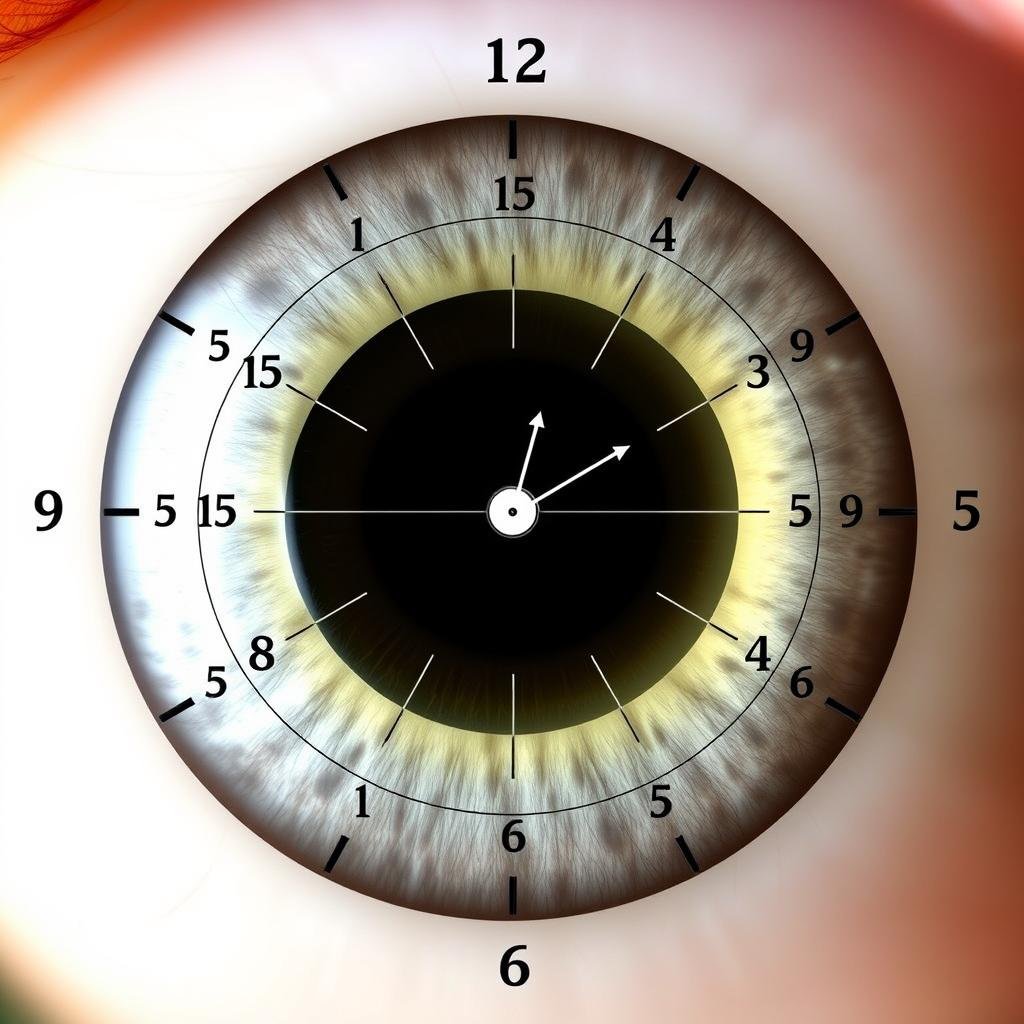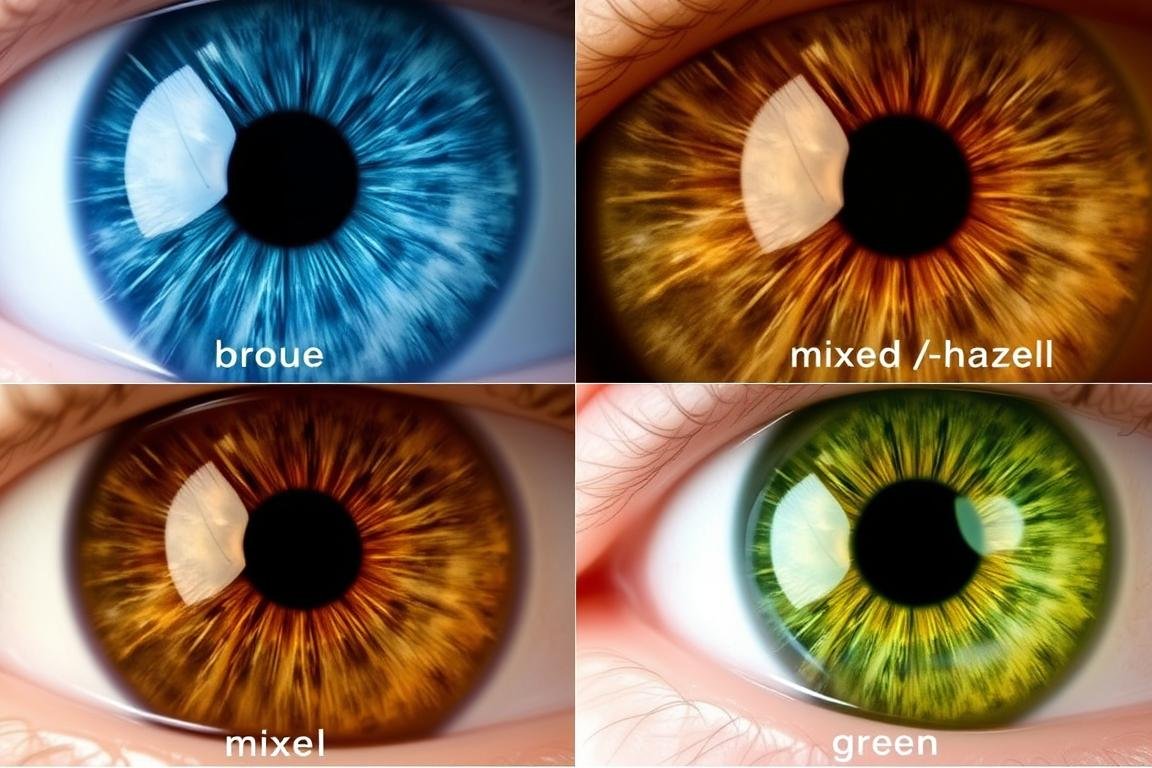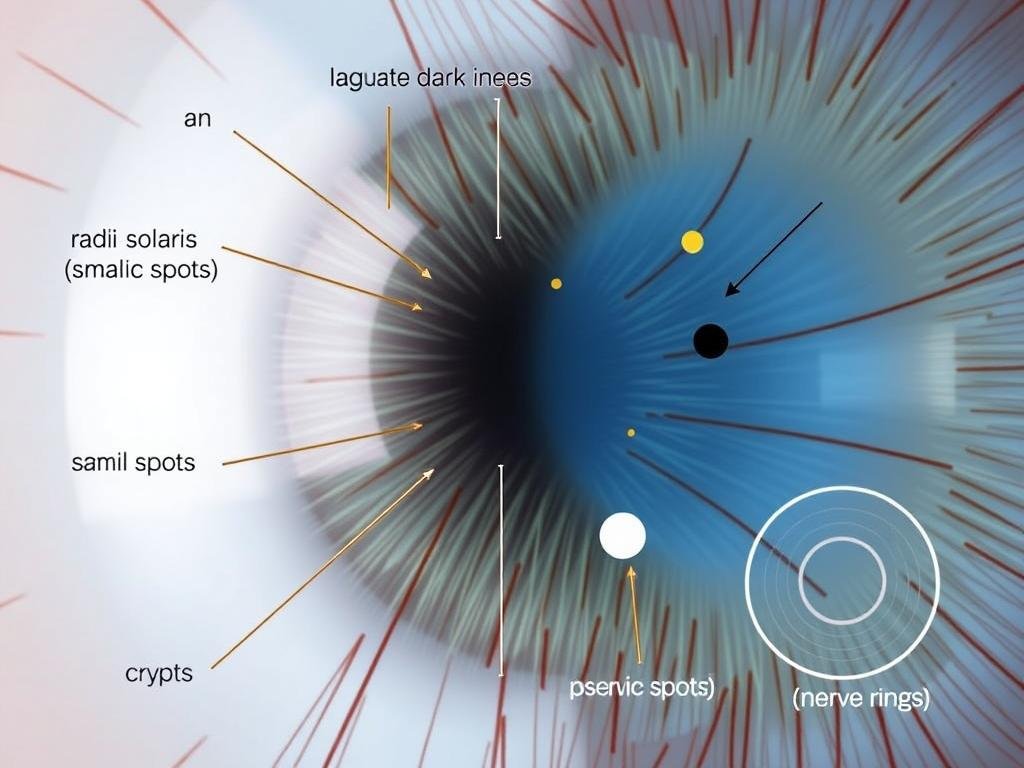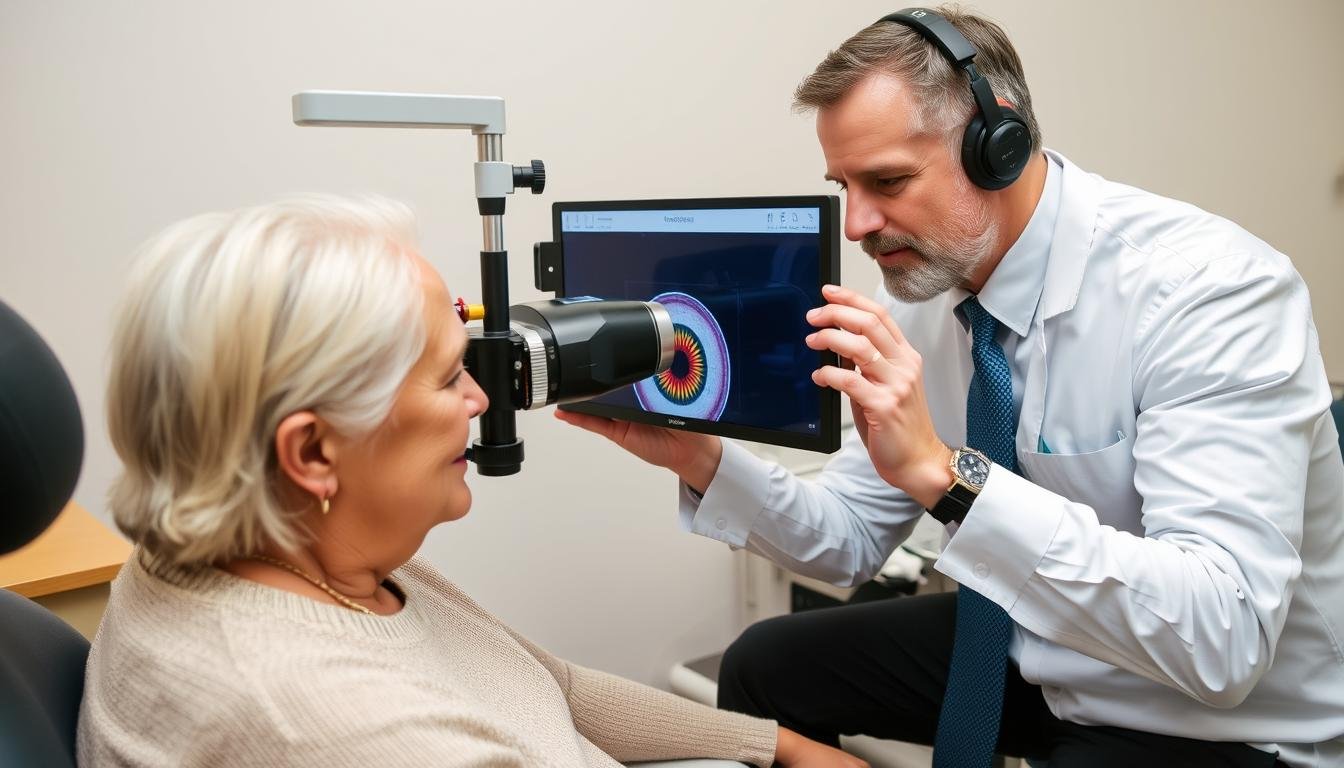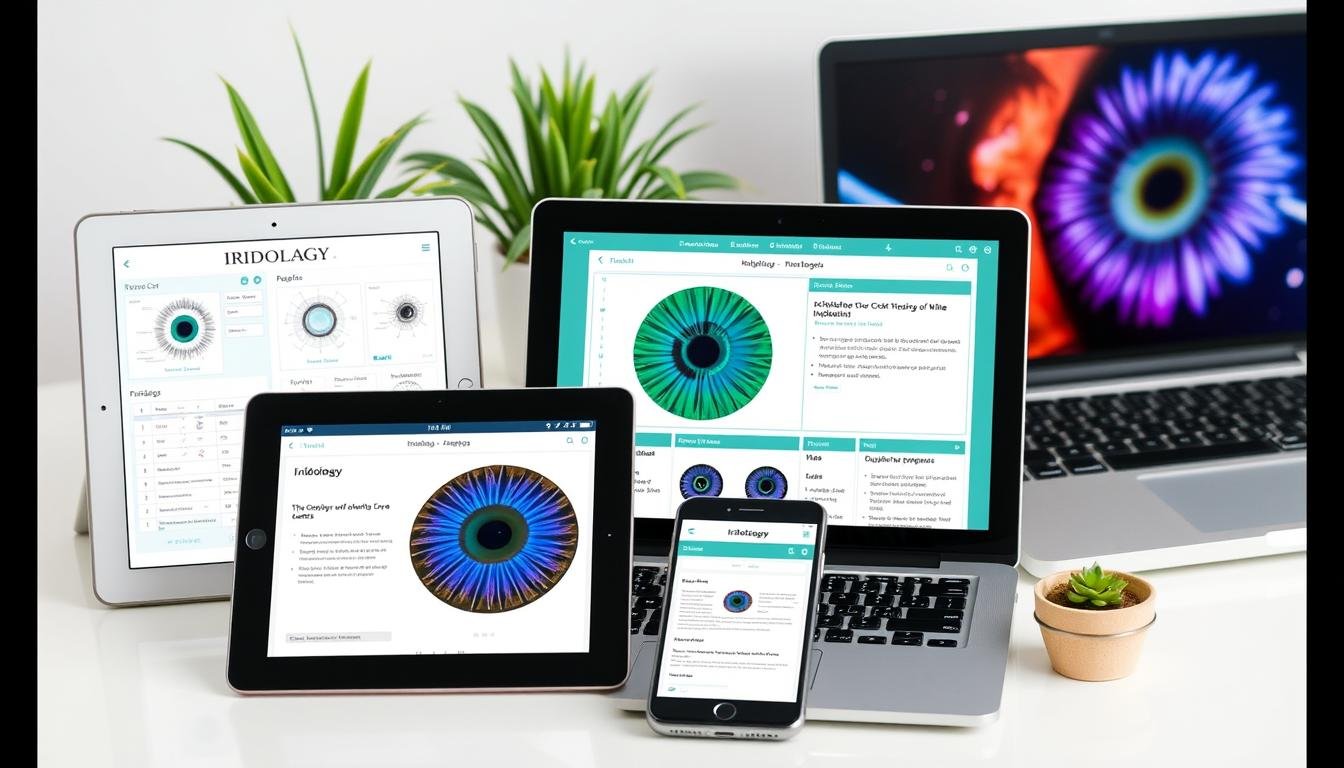The human iris contains intricate patterns as unique as fingerprints. Iridology charts map these patterns to potential health insights, creating a fascinating intersection between the eye and holistic health assessment. This comprehensive guide explores the world of iridology charts, their interpretation, and what science says about their application.

Understanding Iridology Charts: Definition and Purpose
An iridology chart is a detailed map that divides the iris—the colored part of your eye—into zones corresponding to different organs and body systems. These charts serve as reference tools for iridologists who analyze iris patterns, colors, and markings to identify potential health imbalances or constitutional strengths and weaknesses.
A typical iridology chart maps specific iris zones to corresponding body systems and organs
Unlike diagnostic tools in conventional medicine, iridology charts don’t claim to diagnose specific diseases. Instead, they help practitioners identify areas of potential stress, inflammation, or constitutional weakness in the body. The fundamental principle behind these charts is that the iris connects to every organ and tissue via the nervous system, potentially reflecting the condition of these structures through visible changes.
Explore Iridology Further
Want to learn more about how iridology charts work in practice? Download our free comprehensive guide with detailed chart explanations.
Download Free Guide
The Historical Development of Iridology Charts
The modern practice of iridology is often attributed to Hungarian physician Dr. Ignatz von Peczely, who in the 1860s noticed changes in an owl’s iris after the bird suffered a broken leg. This observation led him to develop one of the first systematic iridology charts mapping iris zones to body organs.

An early iridology chart developed in the late 19th century
Throughout the 20th century, practitioners like Bernard Jensen in the United States and Josef Deck in Germany further refined these charts, creating more detailed mappings. Today’s iridology charts build upon these foundations while incorporating modern understanding of physiology and holistic health principles.
Structure of a Typical Iridology Chart
Modern iridology charts typically divide the iris into multiple zones, creating a detailed map that correlates specific areas to different body systems and organs. Understanding this structure is essential for anyone interested in iridology interpretation.
Basic Zonal Division
Most iridology charts organize the iris into concentric rings radiating outward from the pupil:
- Autonomic Nerve Wreath – The circular boundary dividing the iris into inner and outer zones, representing the autonomic nervous system
- Pupillary Zone – The inner area closest to the pupil, typically associated with digestive organs and the stomach
- Ciliary Zone – The middle to outer area, mapped to most major organs and body systems
- Peripheral Zone – The outermost rim, often linked to skin, lymphatic system, and circulation


The concentric zones of an iridology chart showing pupillary, ciliary, and peripheral regions
Left and Right Iris Differences
Iridology charts typically differentiate between the left and right iris:
Right Iris
- Associated with the right side of the body
- Corresponds to liver, gallbladder, and right kidney
- Often linked to more “masculine” or yang energy in some systems
Left Iris
- Associated with the left side of the body
- Corresponds to heart, spleen, and left kidney
- Often linked to more “feminine” or yin energy in some systems
Clock-Face Mapping
Many iridology charts use a clock-face system to further organize the iris into sections:



The clock-face mapping system divides the iris into 12 sections like a clock
- 12 o’clock – Often associated with the brain and head
- 3 o’clock (right iris) – Typically linked to the liver
- 6 o’clock – Generally corresponds to digestive and reproductive organs
- 9 o’clock (left iris) – Often associated with the heart
Principles of Iridology Chart Interpretation
Interpreting an iridology chart requires understanding both the map itself and the various markings, colors, and patterns that may appear in the iris. Here are the fundamental principles practitioners use:
Color Analysis
Iris base colors are typically categorized into several constitutional types:

Different iris base colors may indicate different constitutional types in iridology
- Blue iris – Often called the “lymphatic constitution,” potentially indicating sensitivity in the lymphatic system
- Brown iris – Sometimes referred to as the “hematogenic constitution,” possibly suggesting stronger blood and circulatory tendencies
- Mixed iris – May indicate a “biliary constitution” with potential sensitivity in the liver and digestive system
Common Iris Signs and Their Meanings
Iridologists look for specific markings and patterns within the iris zones:

Common iris markings analyzed in iridology interpretation
Structural Signs
- Lacunae – Enclosed darkened areas that may indicate tissue damage
- Crypts – Small dark spots potentially showing inherent weaknesses
- Radii Solaris – Spoke-like lines possibly indicating nerve stress
Color Signs
- Pigment spots – Colored spots that may show toxin accumulation
- White signs – Potentially indicating inflammation or acute activity
- Yellow signs – Sometimes associated with kidney or urinary function
Structural Integrity
- Nerve rings – Circular contraction rings possibly showing stress
- Fiber density – The closeness of iris fibers potentially indicating constitution
- Pupil abnormalities – Irregularities that may suggest autonomic imbalances
Learn to Read Iris Signs
Interested in learning how to identify and interpret these iris markings yourself? Our detailed guide includes high-resolution examples of each sign.
Get Your Iridology Guide
How Practitioners Use Iridology Charts
Iridology practitioners employ specific techniques and tools to analyze the iris and apply iridology chart mappings in their practice. Understanding this process provides insight into how these charts function as practical tools.
The Examination Process

An iridologist examining a client’s iris using specialized magnification equipment
- Initial Assessment – The practitioner first examines the overall iris color, structure, and fiber density to determine constitutional type
- Detailed Examination – Using specialized equipment like iris cameras or magnifiers, the iridologist examines specific markings and patterns
- Chart Mapping – Observations are mapped to the corresponding zones on the iridology chart
- Integration – Findings are integrated with other health information and client history
- Recommendations – Suggestions for lifestyle, nutrition, or further assessment are provided based on findings
Tools of the Trade
Modern iridologists use various tools to conduct accurate examinations:
- Iriscope – A specialized camera that captures high-resolution images of the iris
- Magnifying equipment – Including specialized lenses and illuminated magnifiers
- Digital analysis software – Programs that help analyze iris patterns and compare them to chart references
- Reference charts – Detailed iridology charts used during analysis and consultation

A modern digital iriscope used to capture high-resolution iris images for analysis
Case Example: Practical Application
To illustrate how iridology charts are applied in practice, consider this example:
During an examination, an iridologist notices a dark lacuna (enclosed tissue depression) in the liver zone of a client’s right iris. According to the iridology chart, this may indicate potential stress or weakness in liver function. The practitioner might then ask about digestive issues, energy levels, and diet, and potentially recommend liver-supportive herbs, dietary changes, and further assessment by a healthcare provider.
Limitations and Scientific Perspective
While iridology has passionate practitioners worldwide, it’s important to understand both its limitations and the scientific perspective on this practice.
Potential Benefits
- Non-invasive approach to health assessment
- May encourage preventative health measures
- Can promote awareness of constitutional tendencies
- Holistic perspective on health patterns
Limitations
- Lack of substantial scientific validation
- Inconsistent results between practitioners
- Cannot diagnose specific diseases
- Should not replace conventional medical diagnosis
Scientific Research
The scientific community has conducted several studies on iridology with mixed results:

Scientific research examining the validity of iridology claims continues to yield mixed results
- A 1979 study published in the Journal of the American Medical Association found that iridologists could not consistently detect gallbladder disease through iris examination
- Some smaller studies have shown correlations between certain iris signs and specific health conditions
- Most major medical organizations do not recognize iridology as a validated diagnostic method
Important Note: Iridology should be viewed as a complementary approach rather than a replacement for conventional medical diagnosis. Always consult qualified healthcare providers for medical concerns.
Speak with an Iridology Expert
Curious about what an iridology consultation might reveal about your health patterns? Connect with a certified practitioner for a personalized assessment.
Find a Practitioner
Resources for Further Study
If you’re interested in learning more about iridology charts and their application, these resources provide valuable starting points for further exploration:
Recommended Books

Recommended books for deeper study of iridology principles and chart interpretation
- “Iridology Simplified” by Bernard Jensen – An accessible introduction to basic principles
- “The Practical Application of Iridology in Natural Medicine” by Farida Sharan – Detailed practical applications
- “Iridology: A Complete Guide” by Toni Miller – Comprehensive reference with detailed charts
- “The Handbook of Iridology” by Jim Verghis – Modern approach to iris analysis
Online Courses and Training
Several institutions offer training in iridology chart interpretation:
- International Iridology Practitioners Association (IIPA) – Offers certification programs
- Natural Health Institute – Provides online and in-person courses
- School of Natural Medicine – Includes iridology in their holistic health curriculum
Digital Resources

Modern digital resources make iridology chart references more accessible
- Iridology analysis apps for smartphones and tablets
- Online forums and communities for practitioners and enthusiasts
- Digital chart references with interactive features
Start Your Iridology Journey
Ready to explore iridology in more depth? Our comprehensive beginner’s package includes a detailed chart, reference guide, and video tutorials.
Get Started Today
Conclusion: The Balanced Perspective on Iridology Charts
Iridology charts offer a fascinating window into the potential connections between the iris and overall health. While scientific validation remains limited, many holistic health enthusiasts find value in the patterns and insights these charts can reveal.
Whether you approach iridology with curiosity or skepticism, understanding the principles behind these charts provides insight into a unique perspective on health assessment. As with any complementary approach, iridology is best viewed as one tool among many in the pursuit of wellbeing, rather than a standalone diagnostic system.
If you choose to explore iridology further, approach it with an open but critical mind, and always integrate any insights with conventional medical care. The eye may indeed be a window to many aspects of health, but it’s the integration of multiple perspectives that creates the most complete picture.

Self-exploration with iridology charts can be an interesting journey into understanding your unique constitutional patterns
Continue Your Holistic Health Journey
Explore our complete library of holistic health resources, including guides on related assessment methods and natural approaches to wellbeing.
Explore More Resources









